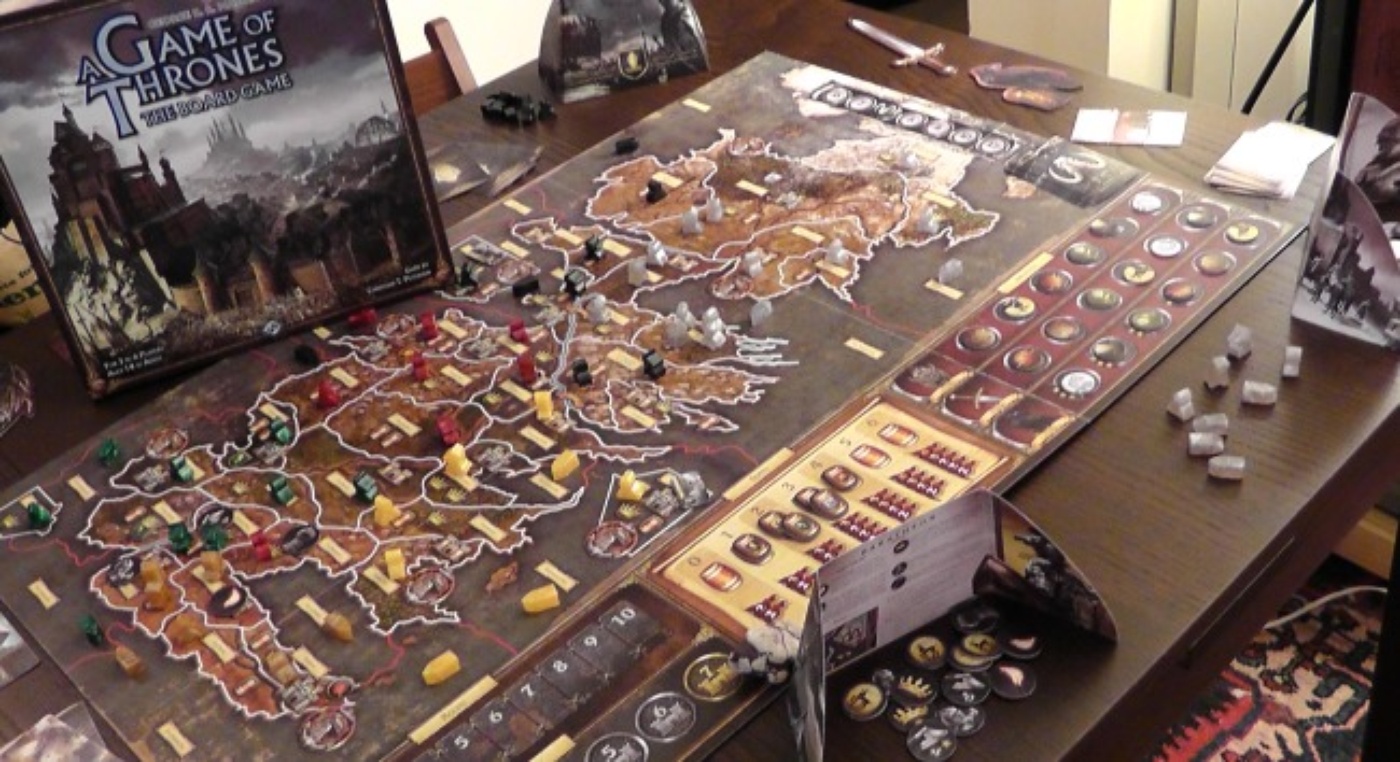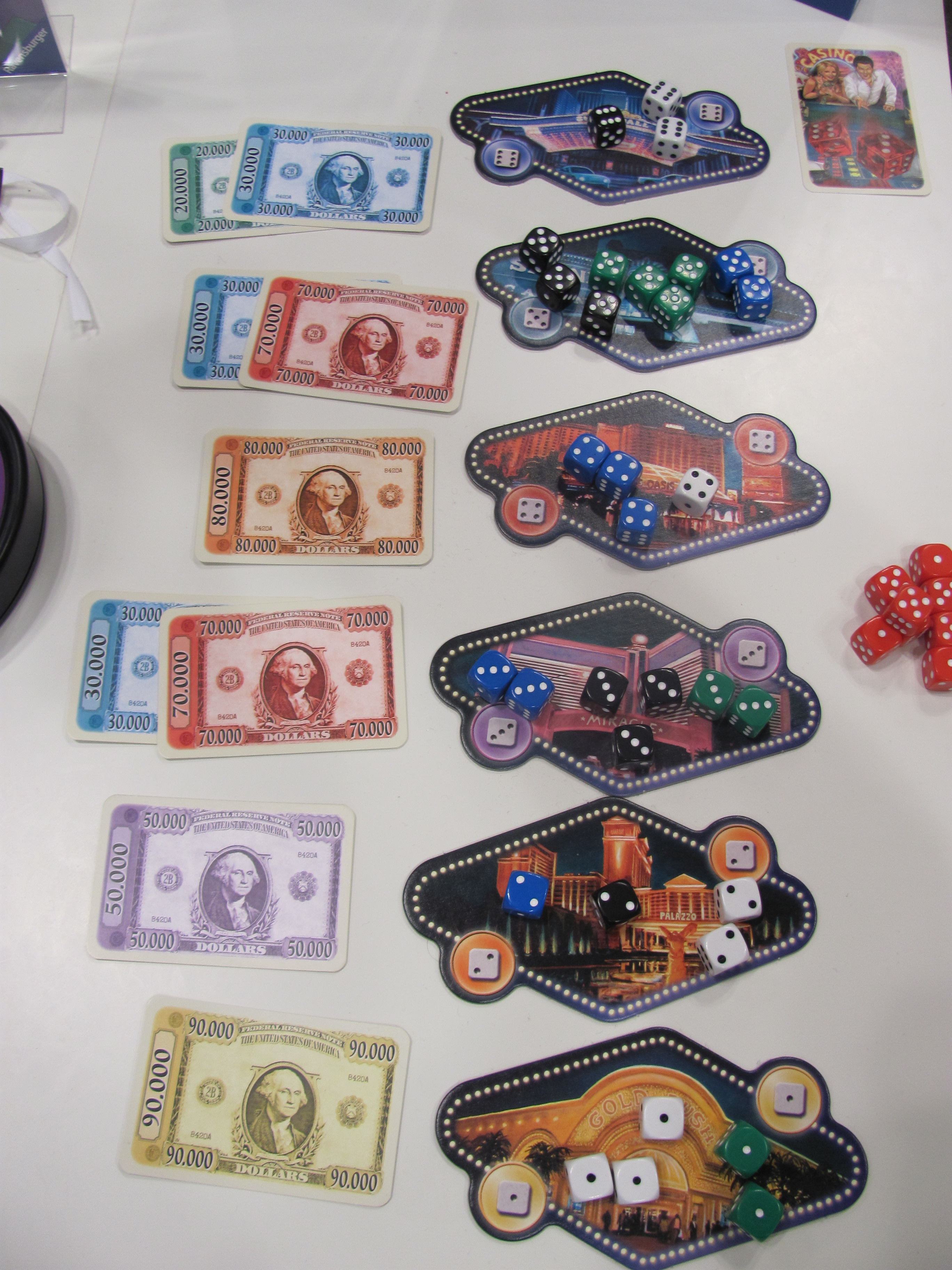Designer: Isaias Vallejo
You are the mayor of a medieval town. During the game, you will build a tableau of citizens, and use those citizens to generate resources (might, magic and gold) that you can use to recruit new citizens, kill monsters, and ultimately claim territory that offers powerful buffs to your fabled land. Killing monsters and conquering great territories is the typical path to victory.
How you earn those resources is the interesting thing, though. Your tableau of citizens each have a number from one to twelve. Every turn, a player rolls dice. If you hit those numbers, you get resources based on the numbers you roll. If you roll a 2, a 3, you’ll score any ‘2’s, ‘3’s and ‘5’s in your tableau. If you have two ‘2’ cards, that citizen will pay off twice.
Interesting Mechanic: Off-turn rewards. But you don’t just get rewards when YOU make those rolls. Each card has two reward amounts – one for when you roll it, and another (usually lesser) reward when another player makes that roll. This incredibly simple change both helps mitigate streaks of bad luck, as well as keeps people invested in the game when it’s not their turn.
Valeria: Card Kingdoms is a good, albeit imperfect game. In a couple of plays I’ve had, the early game is tense, but eventually everyone has full coverage and is awash in resources. Still, this is a very interesting mechanic, and one that feels like its worth more plays, and may inspire other similar, better balanced systems in the future.

(Photo Credit: ICv2)









Recent Comments